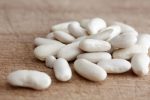School supply sales are in full swing, which means it’s time for the kids to go back to school.
This can be an exciting time for children and their parents. But for some families, this time of year can be flooded with stress and anxiety.
The 2016 National Survey of Children’s Health found a wide range of ADHD diagnoses from ages 2 to 17 years old.
• Ages 2-5: Approximately 388,000 children.
• Ages 6-11: Approximately 2.4 million children.
• Ages 12-17: Approximately 3.3 million children.
Another interesting statistic that NSCH found was that nearly two of three children with ADHD had at least one other mental, emotional or behavioral disorder. Fifty percent of children with ADHD had a behavior or conduct problem. One out of three children with ADHD had anxiety. And other conditions affected children with ADHD such as depression, autism spectrum disorder, Tourette syndrome and more.
With children getting diagnosed starting at age 2, we must look at all possible causes and solutions.
What is a normal behavior of young children? What were the birth factors that could have contributed to increased anxiety and ADHD? What are the current and past environmental factors contributing to the behavior? Our goal is to modify potential contributing factors of ADHD so that neurological-changing medications are used as a last resort.
Here’s how to help your child thrive this school year:
1. Modify the environment
a. Use non-toxic chemicals to clean with, such as Epsom salts, baking soda, vinegar and essential oils.
b. Use chemical-free laundry detergent.
c. Make sure child isn’t exposed to mold or other chemicals, such as secondhand smoke. Remove source and add an air purifier, and keep in bedroom and/or any other room where most of the time is spent.
2. Modify the diet
a. Remove artificial dyes (especially red 40).
b. Cut out gluten and dairy for four weeks, and see if any changes in behavior or physical symptoms are noted. This has been the most effective modification I’ve seen in children with mental health diagnoses.
c. Less processed, sugar foods and more whole foods/whole meals.
3. Use yoga, meditation and exercise
a. If your child is having a hard time sleeping at night, you can try yoga nidra on YouTube or a phone app and let your child listen to it. This type of yoga is done lying down and only by visualization. It relaxes the mind and can help children and adults ease into a deep slumber.
b. Challenge to Change has brought yoga into schools which has been a blessing to the Dubuque and surrounding communities. They also have children’s yoga sessions and activities at their location all year long to help children find their inner calmness. Ignite Yoga Studio also has children’s yoga throughout the year.
c. Family outdoor activities can help children release any built-up energy. There are programs at the YMCA and through Leisure Services for every season. In the Winter, Sundown Mountain offers weeknight and weekend lessons for children age 4 and older.
d. Reducing the use of indoor video games, tablets and other mobile devices can help kids process emotions and feel better overall. This also decreases the blue-light exposure they are getting from these devices which disrupts hormones and their natural circadian rhythm.
4. Testing
a. If the child was possibly exposed to lead (water, paint or house water pipes) or has silver (mercury) fillings in their mouth, have them checked for heavy metals. Specialized urine testing is the most optimal way to do this. Blood tests typically show positive lead or other heavy metals if people are recently exposed. Heavy metals like to hang out in our bones and tissues for more than 25 years.
b. If there are physical symptoms such as eczema, rashes, ear infections, chronic upper respiratory infections, bloated tummy, constipation, etc., food sensitivity is highly likely. Again, removing gluten and dairy for four weeks can help. If that doesn’t work, more testing needs to be done.
5. Supplementation
a. For a child or adult who is anxious, using L-Theanine 100mg up to three times daily can help ease anxiety. There are chewable forms. Just make sure they don’t have fake dyes, colors, sugars and other poor ingredients.
b. If the child is chronically constipated (not going one to two times per day), this could be contributing to their behaviors. Try MoveEeez (magnesium, vitamin C and minerals) to help promote bowel movements. Avoid MiraLAX due to its chemical components and lack of research showing safety in long-term use.
I hope you all have a wonderful & healthy school year.
Grutz is a board-certified family nurse practitioner specializing in integrative medicine in Dubuque.














